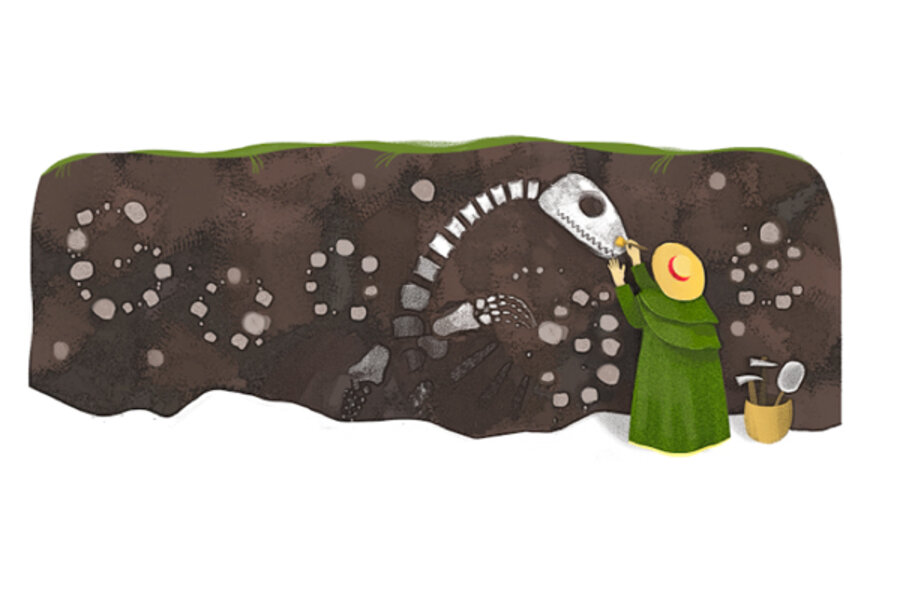Google honors Mary Anning 'the greatest fossil hunter ever known'
Loading...
Even if you hadn't heard of Mary Anning before Wednesday, when Google replaced the logo on its homepage with a cartoon of the English fossil hunter lovingly excavating a plesiosaur, you have probably heard this this tongue twister about her, composed a half-century after her death:
She sells sea-shells on the sea-shore.
The shells she sells are sea-shells, I'm sure.
For if she sells sea-shells on the sea-shore
Then I'm sure she sells sea-shore shells.
Anning, who spent her life collecting curiosities in England's southern coastal town of Lyme Regis and selling them to tourists and scientists alike, dealt in more than just shells. Her discoveries included the first two plesiosaurs, the first complete ichthyosaur, and the first pterosaur found outside Germany.
Born on May 21, 1799, to a family of working-class Dissenters, Anning's gender, social standing, and, religion made her an unlikely figure in early-19th century paleontological circles. But after her discovery of the ichthyosaur, an oceangoing reptile that lived about 200 million years ago and resembled a 17-foot-long, four-limbed dolphin, Europe's eminent scientists began to take note of Anning's abilities. She was twelve years old at the time.
At the time of the discovery, her father, a cabinetmaker, had recently passed away, leaving Mary, her brother Joseph, and her mother to try to make a living selling fossils at a makeshift stall in Lyme Regis.
The location couldn't be beat: The coastal cliffs of Dorset are a giant, continuous storyboard of 185 million years of our planet's history, from the Triassic to the Jurassic to the Cretaceous, with erosion and landslides continuously revealing new specimens. Anning's town of Lyme Regis, in particular, was a repository for denizens of the Jurassic seas, including bony fish, huge reptiles, squidlike creatures called belemnites, and nautilus-like animals called ammonites.
Anning and her family collected and sold them all. As her fame grew, she was visited by, and corresponded with, Europe's leading paleontologists, including Louis Agassiz, Richard Owen, and William Buckland.
Yet, even as she established herself as, in the words of Britain's Natural History museum, the "greatest fossil hunter ever known," Anning and her family still struggled financially their whole lives. Near the end of her life, members of the British Association for the Advancement of Science and the Geological Society of London raised money to give her an annuity of £25 per year until her death in 1847.
Charles Dickens memorialized her in 1865. In "All the Year Round," the literary magazine he founded, Dickens wrote of Anning, “Her history shows what humble people may do, if they have just purpose and courage enough, towards promoting the cause of science.”








